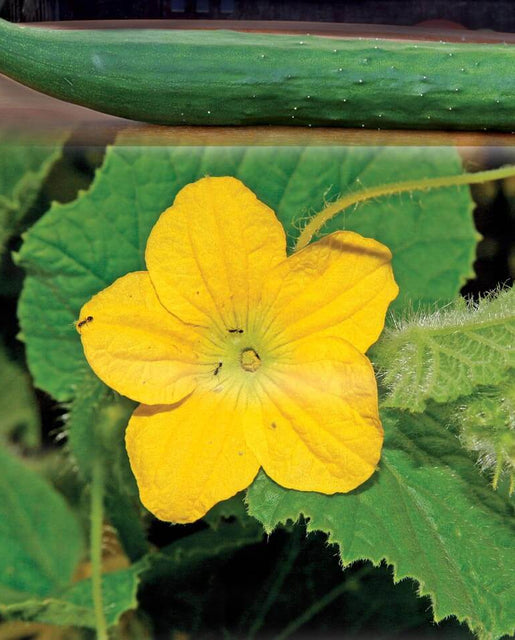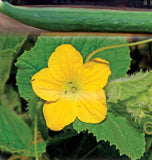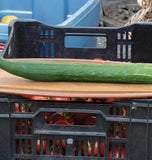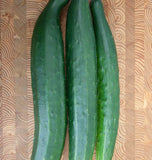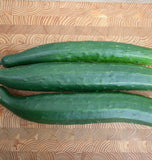Diseases & Pests
Several diseases attack cucumbers, but problems with this plant are mostly caused by cultural practices that stress the plants. Make sure to keep the garden clean and tidy, remove diseased material and do not compost. Avoid overwatering and directly spraying water on to the leaves. Plant in a well-drained site and follow strict crop rotations. Whenever possible, use disease resistant varieties.
If cucumber plants get off to a good start, few pests will bother them. If pests are present, young plants are best protected with floating row covers that are removed when flowering starts. Aphids, cutworms and thrips can be a nuisance. The cucumber beetle may cause problems east of the Rockies.
Sometimes fruit begins to rot on the vine. This is caused by a fungus during periods of high humidity. Pick these fruit off. The situation will improve as the weather improves.
Powdery Mildew – An airborne fungal disease that causes white spots on the leaves at the end of the season. Several home-sprays are said to be somewhat effective. Spray any of the following at 7-10 day intervals. 1tsp baking soda and 1 quart of water with a squirt of dish soap, or 1 part milk to 9 parts of water. Resistant varieties get the mildew just a few days later than the other varieties.
Various wilts cause the vines to wilt and die. Controls are strict sanitation in the garden and greenhouse. Avoid over-watering, plant in well-drained soil, use long rotations, and use disease resistant varieties when available.
Aphids and thrips are indications of plant stress. Before running out to buy an insecticidal soap or other chemical solution begin to solve the problem by trying to figure what the stressors are and dealing with them. Are the plants over- or under-watered? What fertilizer is being used? Is it a balanced organic fertilizer? Predatory insects will be attracted to the site and will benefit greatly by an interplanting of Sweet Alyssum, dill, or cilantro. Our Crimson and Dutch White Clover planted along pathways between rows is excellent for attracting beneficial insects too. Place shallow dishes of water with small protruding rocks in amongst the cucumbers for beneficial insects to stop and have a drink. They’ll lay more eggs, eat more pests, and be more effective if you provide for their needs right where the problem occurs in the garden. Instead of thinking that the solution is to remove the problem, think about what can be done to aid nature in creating a balance.
Cutworms can be handpicked during the day if small pieces of wood or cardboard are laid out near the cucumbers for them to hide under. All the better to find them. Keeping chickens or ducks works too.

















